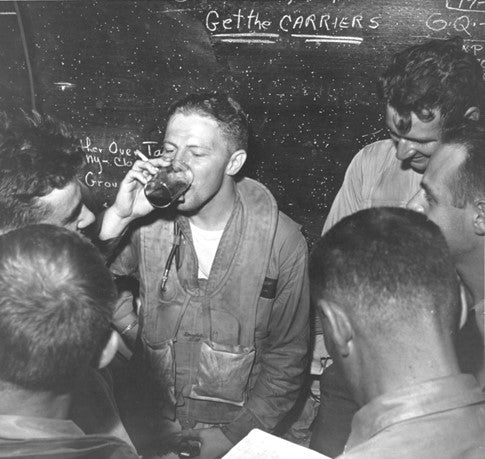
Continuing to celebrate the U.S. World War II victory in the Pacific…
The Battle of the Philippine Sea occurred over 2 days, from 19-20 June, 1944. It was the opening encounter between the Allies and Japan of Operation FORAGER, the liberation of the Mariana Islands and Palau in the Pacific. It is often referred to as the Great Marianas Turkey Shoot, which was the aerial component of the battle. It was the last major carrier-vs-carrier battle in the Pacific, and was the largest carrier battle in history, involving 24 aircraft carriers and roughly 1350 carrier-based aircraft. There were also 12 battleships, 34 cruisers, 99 destroyers, and 52 submarines involved.

The Imperial Japanese Navy’s (IJN) leadership was convinced that the moment for large-scale fleet action had come and were pressing for a decisive battle. Previous attempts to win a decisive battle with the U.S. Navy at Coral Sea, Midway, and the Solomons campaign had either failed or fallen short of achieving the sought-after turning point.

The U.S. Navy’s Task Force 58 (Fast Carrier Task Force) and the IJN’s Carrier Division 3 met in battle on 19 June. The battle was fought in a series of engagements mostly in the air over waters several hundred miles west of Saipan. Over the course of the battle, U.S. submarines sank 2 of the largest Japanese carriers taking part, while U.S. carrier strikes sunk a third Japanese carrier. All told, the Japanese lost 3 carriers, 2 oilers, around 600 aircraft, and almost 3000 personnel, while the U.S. lost 123 aircraft, 109 personnel, and suffered damage to one battleship.

The losses for Japan were unrecoverable; the bulk of their remaining seasoned combat pilots died during the battle. Japan’s manufacturing and infrastructure could not replace the three lost front-line carriers nor could it produce the aircraft or the pilots to man them. The Battle of the Philippine Sea effectively spelled the end of Japanese naval aviation and carrier forces.
We at Old Salt Coffee Company hoist our mugs to the personnel who bravely fought in the skies over the Pacific those two days.

